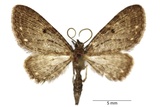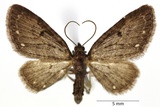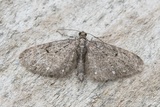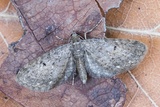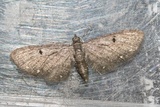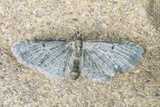Eupithecia tripunctaria Herrich-Schäffer, [1852] Species
Last modified: Nov. 8, 2025, 6:31 p.m.
A rather common species throughout Belgium.
This species is considered Least Concern according to the IUCN Red List category for Flanders 2023.
Details
- Classification
- Family: Geometridae > Subfamily: Larentiinae > Tribus: Eupitheciini > Genus: Eupithecia > Species: Eupithecia tripunctaria
- Vernacular names
- Schermbloemdwergspanner (NL), White-spotted Pug (EN), l'Eupithécie triponctuée (FR), Dreipunkt-Blütenspanner (DE)
- Synonyms
- Eupithecia albipunctata (Haworth, 1809), nec (Hufnagel, 1767)
- First mention in Belgium
- De Crombrugghe G. 1907b. Compte rendu des recherches entomologiques entreprises à Rochefort, pendant l’été de 1907. — Revue mensuelle de la Société entomologique namuroise 7: 42–46. On page 45.
- Status
-
Native
Distribution
Bionomics
Hibernates as pupa among plant debris.
The caterpillars are known to eat other caterpillars occasionally.
The adults are active from dusk onwards and later come to light.
No pictures yet!
Flight periods
The adults fly in two generations a year from April till June and from July till early September.
Observed on
- Host plant (species):
- Sambucus nigra, Angelica sylvestris and Heracleum sphondylium
The larva lives in the flowers and seeds of Angelica sylvestris, Heracleum but also on Sambucus nigra.
No pictures yet!
